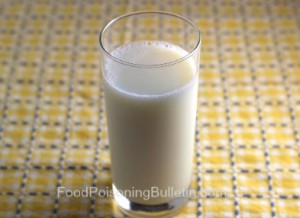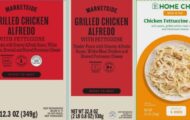The Centers for Disease Control and Prevention has released a new study in Emerging Infectious Diseases stating that the number of food poisoning outbreaks in the United States caused by raw (unpasteurized) milk increased from 30 in 2007 – 2009 to 51 in 2010 – 2012.
 Most of the outbreaks were caused by Campylobacter bacteria, and most occurred in states where the sale of raw milk is legal. Most worryingly, this increase in outbreaks happened at the same time there was a decline in the number of states where raw milk sales are legal, from 28 in 2004 to 20 in 2011.
Most of the outbreaks were caused by Campylobacter bacteria, and most occurred in states where the sale of raw milk is legal. Most worryingly, this increase in outbreaks happened at the same time there was a decline in the number of states where raw milk sales are legal, from 28 in 2004 to 20 in 2011.
A food poisoning outbreak is defined as two or more cases of a similar illness resulting from eating a common food. The outbreaks caused by raw milk resulted in 979 illness and 73 hospitalizations. The bacteria responsible for the illness was reported in all of these outbreaks.
Campylobacter caused 81% of the outbreaks, followed by Shiga toxin-producing E. coli at 17%, Salmonella at 3%, and Coxiella burnetii at 1%. Three of the outbreaks were caused by multiple pathogenic bacteria.
For 59% of the outbreaks, at least 1 patient under the age of 5 was involved. Children are more susceptible to serious complications from foodborne illness, especially hemolytic uremic syndrome after an E. coli infection.
The report also states that making raw milk legal in one state leads to outbreaks in neighboring states. A Campylobacter outbreak from raw milk produced by Family Cow in Pennsylvania sickened at least 80 people in four states, including Maryland, West Virginia, and New Jersey, all of which prohibit the sale of raw milk. All the patients who did not live in Pennsylvania traveled to that state to buy the raw milk.
The report ends by stating that outbreaks associated with raw milk are a public health challenge. Public health officials should educate legislators and consumers about the dangers of drinking raw milk. And federal and state regulators should enforce regulations to prevent the distribution of raw milk.




